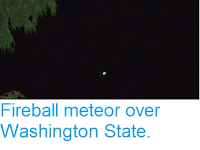Asteroid 2017 QP1 passed by the Earth at a distance of 62 640 km
(0.17 times the average distance between the Earth and the Moon, or
0.04%
of
the average distance between the Earth and the Sun), slightly before 9.25 pm
GMT
on Monday 14 August 2017. There was no danger of the asteroid
hitting us, though had it done so it would have presented only a minor
threat.
2017 QP1 has an estimated equivalent diameter of 26-82 m (i.e. it is
estimated that a spherical object with the same volume would be 26-82 m
in diameter), and an object towards the upper end of this range would be
expected to explode in
an airburst (an explosion caused by superheating from friction with the
Earth's atmosphere, which is greater than that caused by simply
falling, due to the orbital momentum of the asteroid) in the atmosphere
about a kilometre above the ground, with an explosive force about 600 times as
large as that of the Hiroshima bomb; not large enough to cause
long-lasting global problems, but fairly devastating for anyone directly
underneath.
The calculated orbit of 2017 MC1. Minor Planet Center.
2017 QP1 was discovered on 16 August 2017 (two days after its closest approach to the Earth) by the Atlas MLO Telescope at Mauna Loa Observatory in Hawaii. The designation 2017 QP1
implies that the asteroid was the 40th object (object P1) discovered in the second half of August 2017 (period 2017 Q).
2017 QP1 has a 586 day orbital period and an eccentric orbit
tilted at an angle of 8.14° to the plane of the Solar System, which
takes it from 0.40 AU from the Sun (i.e. 40% of he average distance at
which the Earth orbits the Sun, slightly outside the orbit of the planet Mercury) to 2.33 AU from the Sun (i.e. 233% of the
average distance at which the Earth orbits the Sun, and almost two times as distant from the Sun as the planet Mars). It is therefore
classed as an
Apollo Group Asteroid (an asteroid that is on average further from the
Sun than the Earth, but which does get closer).
See also...
Follow Sciency Thoughts on Facebook.







